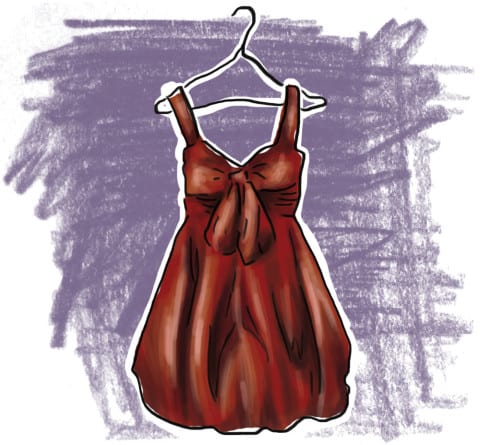JD BELL
 Holding both symbolic and realistic value, 130 red dresses have been placed across the University of Saskatchewan campus. Stephen Harper’s government continues to ignore the harsh brutality of the project’s meaning and the public cry of the search for truth. But the REDress project deserves recognition — and beyond that, so do all the women, families and communities who have been affected.
Holding both symbolic and realistic value, 130 red dresses have been placed across the University of Saskatchewan campus. Stephen Harper’s government continues to ignore the harsh brutality of the project’s meaning and the public cry of the search for truth. But the REDress project deserves recognition — and beyond that, so do all the women, families and communities who have been affected.
For anybody unsure of what the REDress project is, Winnipeg artist Jamie Black, who created the project, pointedly stated the REDress project “seeks to create space for dialogue around the gendered and radicalized nature of violence against indigenous women.” This exhibit takes place during a time where there is an increasing demand for the federal government to launch a public inquiry into our missing and murdered indigenous women (MMIW) and the current conservative government continues to ignore the issue.
While the Harper government fails to recognize the reality that Canadian law does not provide equal protection to Aboriginal women and girls, and while Harper may wish to continue to delude himself into believing Canada has “no history of colonialism” like he stated in September of 2009, the REDress project is doing much more than creating space for dialogue around this issue.
For the families, friends, community and First Nations that have had to deal with the tragic and horrific reality of watching yet another one of our women and girls either go murdered or missing, the REDress project approaches closer to being a memorial ceremony for our Nations’ missing women and girls.
I don’t speak for all people affected by the issue when I suggest REDress is a memorial ceremony rather I speak for my family and myself.
On June 21, 2012 my niece — Natalia Marie Dawn Shingoose — was murdered in Regina when she was only two years old. My family is well aware that in 1984, the percentage of Aboriginal female murders was eight per cent and by 2012 — the year my nieces’ life and my family’s hearts were viciously and violently stolen — Aboriginal female murders accounted for 23 per cent of all murders in Canada.
Despite this growing epidemic, the federal government continues refuting the plight Aboriginal women and girls face. In doing so Prime Minister Stephen Harper and his Conservative government spit on the families and communities who suffer from the refusal to adequately and equally protect Aboriginal women and girls.
For my family and I, knowing the REDress project is bringing attention to the disproportionate number of Aboriginal women and girls who are murdered and go missing every year gives us comfort — because maybe, just maybe, this gross injustice will be addressed.
The REDress project’s 130 red dresses will remain on our campus for a total of three weeks. It will remind our campus community of the faceless and invisible Aboriginal women and girls who have been murdered or disappeared in Canada since 1980; women and girls our federal government and Harper would rather remained invisible. The REDress project will continue to travel across the country for the next seven years, reaching over 20 communities and 14 universities and will have its rightful spot in the Canadian Museum of Human Rights.
This project is a worthy tribute for families and communities that have lived through the disappearances and murders of their mothers, daughters, aunts, grandmothers and wives. I hope that while the federal government refuses to acknowledge that Aboriginal women and girls do not receive equal protection under the law that some of those communities and families — including my own — will find some solace knowing projects like Black’s REDress will not let our women and girls lost lives be forgotten.
—
Graphic: Stephanie Mah/Graphics Editor